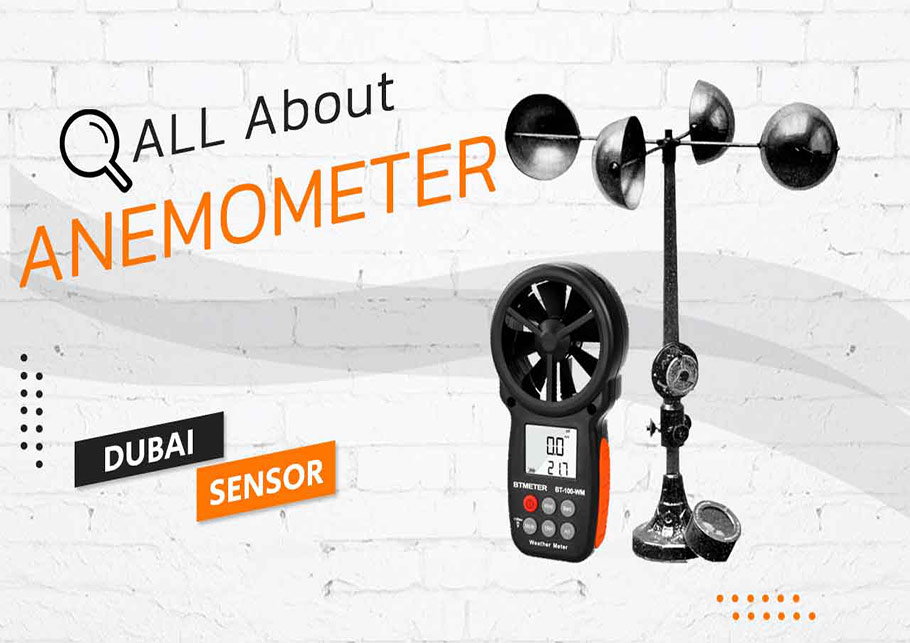Specialist Tips for Adjusting Your Anemometer for Optimum Efficiency
Wiki Article
Anemometers Introduced: Recognizing Their Value in Ecological Surveillance and Precaution
The role of anemometers in environmental monitoring and safety procedures is typically ignored, yet their significance is undeniable. From weather forecasting to air travel safety, anemometers play a critical duty in providing precise data that educates decision-making processes and enhances general safety.History of Anemometers
The advancement of anemometers can be traced back to the ancient worlds where basic wind measuring gadgets were initial utilized. One of the earliest recognized anemometers was the hemispherical mug anemometer designed by Leon Battista Alberti in the 15th century.In the 18th century, the popular researcher John Thomas Romney Robinson presented the Robinson anemometer, which featured four hemispherical cups installed on straight arms that extended from a central axis. This design came to be a standard in meteorological measurements because of its accuracy and dependability. For many years, advancements in technology resulted in the advancement of even more contemporary anemometers, consisting of ultrasonic anemometers and laser Doppler anemometers, supplying increased precision and efficiency in measuring wind speed and direction. The history of anemometers showcases an exceptional journey of technology and progress in the field of meteorology.
Types of Anemometers
Throughout the area of weather forecasting, numerous kinds of anemometers have actually been created to precisely gauge wind speed and direction. Sonic anemometers utilize ultrasonic signals to measure wind rate and instructions properly. Hot-wire anemometers operate based on the concept that the cooling effect of wind on a heated cord is proportional to the wind speed.Applications in Weather Forecasting
Having gone over the various kinds of anemometers utilized in meteorology for determining wind rate and instructions, it is important to discover their sensible applications in the area. Anemometers play an important function in weather forecasting by giving real-time and accurate information on wind problems (anemometer). Meteorologists use anemometers to keep an eye on wind rate and direction to anticipate weather condition patterns, concern cautions for serious weather events like typhoons, storms, and twisters, and examine weather for aviation safetyIn weather forecasting, anemometers aid in recognizing local and neighborhood wind patterns, which are crucial for anticipating weather changes and determining climatic trends. These devices are also made use of in research study to research microclimates, metropolitan heat islands, and air contamination diffusion. Furthermore, anemometers are employed in farming to enhance plant administration practices, such as watering and pesticide application, based on wind problems.
Significance in Aviation Safety And Security
An indispensable element of ensuring aeronautics security hinges on the careful monitoring of wind problems using anemometers. Anemometers play a crucial function in aviation by supplying real-time data on wind rate and instructions, helping pilots in making educated decisions throughout take-off, landing, and trip. Solid and unpredictable winds can considerably influence aircraft operations, making it crucial for air travel authorities to published here depend on accurate wind measurements to make sure the safety of travelers and staff.
In the vibrant environment of aeronautics, where even small changes in wind rate and instructions can have profound results, anemometers stand as crucial tools for advertising safe and safe air traveling.
Role in Environmental Study
How do anemometers add to developments in ecological research? Anemometers play a crucial function in ecological research by supplying essential information on wind speed and instructions. This details is crucial for comprehending various atmospheric procedures, such as air pollution diffusion, climate patterns, and environment change. By accurately determining wind features, anemometers help researchers examine the activity of pollutants in the air, examine the influence of commercial emissions, and predict the spread of pollutants in the atmosphere.

Conclusion
Finally, anemometers have played a vital role in ecological surveillance and safety measures. With a rich background and different types readily available, these tools have been commonly utilized in meteorology, aeronautics safety and security, and environmental study. Recognizing the significance of anemometers is vital for precisely determining wind speed and instructions, which is essential for predicting climate patterns, making sure risk-free aeronautics operations, and conducting ecological studies - anemometer. Their payments to these areas can not be ignored.One of the earliest well-known anemometers was the hemispherical mug anemometer created by Leon Battista Alberti in the 15th century. Over the years, innovations in technology led to the advancement of even more modern-day anemometers, consisting of ultrasonic anemometers and laser Doppler anemometers, providing enhanced accuracy and effectiveness in determining wind rate and instructions. Hot-wire anemometers run based on the principle that the cooling impact of wind on a warmed cord is proportional to the wind rate. Meteorologists utilize anemometers to monitor wind rate and instructions to anticipate weather patterns, issue warnings for extreme weather events like tornadoes, tornados, and typhoons, and examine page atmospheric conditions for aeronautics safety.
Recognizing the significance of anemometers is essential for properly determining wind speed and instructions, which is crucial for forecasting climate patterns, ensuring secure air travel operations, and carrying out ecological studies. (anemometer)
Report this wiki page